CuO2 planes in superconducting Pr2Ba4Cu7O15-δ are both insulating and antiferromagnetic
Apr 05 2022
A novel evidence that confirms the dual nature of superconducting Pr2Ba4Cu7O15-δ
Superconductor will play a huge role in emerging technologies. Hence, it is critical to understand the physics fundamentally. Although the mechanisms of "high-Tc" cuprate superconductors are unknown, the CuO2 planes are generally believed to be the driving force of superconductivity (SC). This is because all the "high-Tc" cuprate superconductors have CuO2 planes. Despite this established theory, there exists some reports that, for superconducting Pr2Ba4Cu7O15-δ (Pr247), the CuO2 planes are insulating and the double chains drive the SC. Unfortunately, however, all the SC properties of Pr247 so far are imperfect.
In these situations, we recently succeeded in synthesizing of Pr247 with perfect SC properties. To investigate the assumption that the planes in Pr247 are really insulating despite the perfect SC, we employed an experimental method with which we can obtain local information in the atomic scale: NMR (nuclear magnetic resonance) and NQR (nuclear quadrupole resonance).
We prepared the Pr247 as follows. A polycrystalline sample of Pr247 was prepared by calcination of the starting materials Pr6O11, BaO2, and CuO at 850 °C for 16 h in flowing O2 (0.1%)/Ar gas. To obtain single phase Pr247, we quenched the sample to room temperature, instead of using the O2 HIP (Hot Isostatic Pressing). The Pr247 sample was found to be of single phase from Xray diffraction. The oxygen reduction amount δ was estimated to be 0.65 from thermogravimetric analysis. For the Pr247 with perfect SC properties, we measured Cu NMR at zero external fields and NQR. To obtain Cu-NQR frequency spectra, we took signal intensities at various points in time. Solids have linewidths larger than the frequency range that a single pulse can irradiate. We used our lab-built auto-tuning system to regulate the resonance and matching capacitors in the probe's tank circuit for the point-by-point measurements. Fig. 1 captures a clear picture of the experimental set-up for the NMR and NQR measurements. To analyzed the spectra, we used an evolutionary algorithm based on Covariance Matrix Adaptation Evolution Strategy (CMA-ES), which avoids artifacts caused by "local minima" in typical least-square approaches.
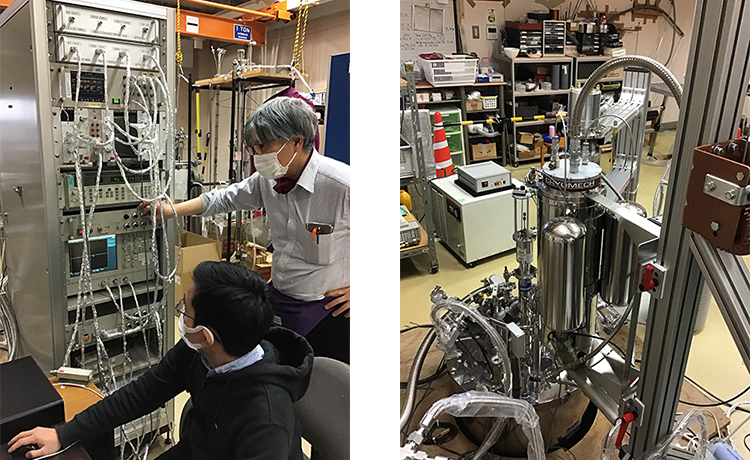
Figure 1. Experimental Set-up.
Picture of the experimental set-up used in conducting the extensive study
Since Pr247 = Pr123 + Pr124, there exist four crystallographically inequivalent Cu sites. As illustrated in Fig. 2, the Pr123 unit has a plane site along with a single chain site, and the Pr124 unit has a plane site and a double chain site. We define the site in the single chain as Cu(1), the plane site in Pr123 (Pr124) unit as Cu(2) [Cu(3)], and the double chain sites as Cu(4).
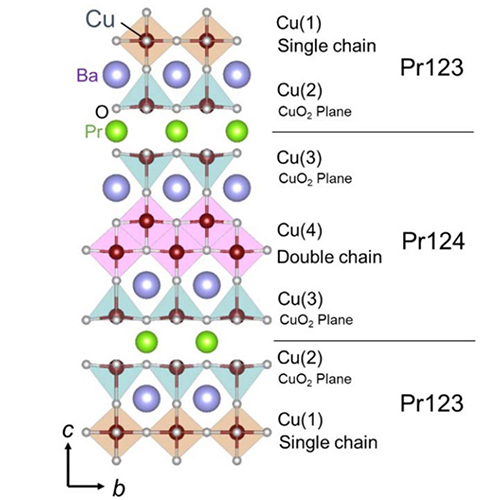
Figure 2. The Structure of Pr2Ba4Cu7O15−δ (Pr247).
Pr247 consists of the alternative stacking of Pr123 and Pr124 unit. Pr247 has four inequivalent Cu sites: single chain Cu(1) site, plane Cu(2) site in the Pr123 unit, plane Cu(3) site in the Pr124 unit, and double chain Cu(4) site. The Cu atoms in the double chain do not form a "ladder" structure but a "double" chain or a "zigzag" chain
To conclude, although the Pr-substituted cuprate of Pr123 or Pr124 does not exhibit SC, we have successfully synthesized a single-phase superconductor Pr247 with the shielding fraction of 100% and the onset Tc of 18 K. We have found that, unlike all the other "high-Tc" superconductors, the Cu plane signals are insulating and antiferromagnetic, indicating that the SC in Pr247 is likely to be driven by the double chains, not the planes.
###
This article "Nuclear-spin evidence of insulating and antiferromagnetic state of CuO2 planes in superconducting Pr2Ba4Cu7O15−δ" was originally published on January 20 2022 in Applied Physics Express (APEX). https://iopscience.iop.org/article/10.35848/1882-0786/ac4533
Authors: Sotaro Nishioka, Susumu Sasaki, Shunsaku Nakagawa, Mitsuharu Yashima, Hidekazu Mukuda, Mamoru Yogi, Jun-ich Shimoyama
For more detail, contact to Prof. Sasaki, susumu@eng.niigata-u.ac.jp.
News release
The article was released in EurekAlert, the online publication of the American Association for the Advancement of Science.
More News
-
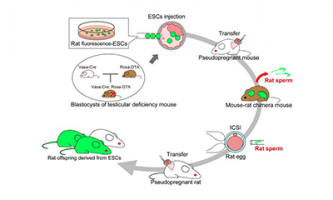 Jul 07 2025 Research results
Jul 07 2025 Research resultsFertilizable rat sperm produced in a mouse body by blastocyst complementation
-
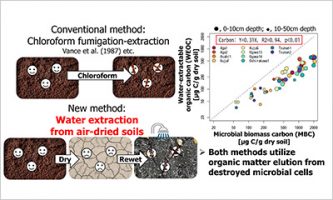 Jun 26 2025 Research results
Jun 26 2025 Research resultsEstimating Microbial Biomass from Air-Dried Soils: A Safer, Scalable Approach ーRevolutionary Technique Estimates Soil Microbial Biomass Using Water-Extractable Organic Matterー
-
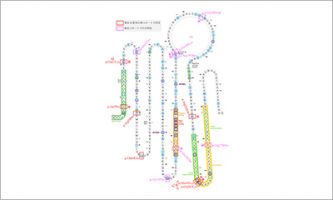 Jun 03 2025 Research results
Jun 03 2025 Research resultsAssociation of rare APOE missense variants with Alzheimer's disease in the Japanese population
